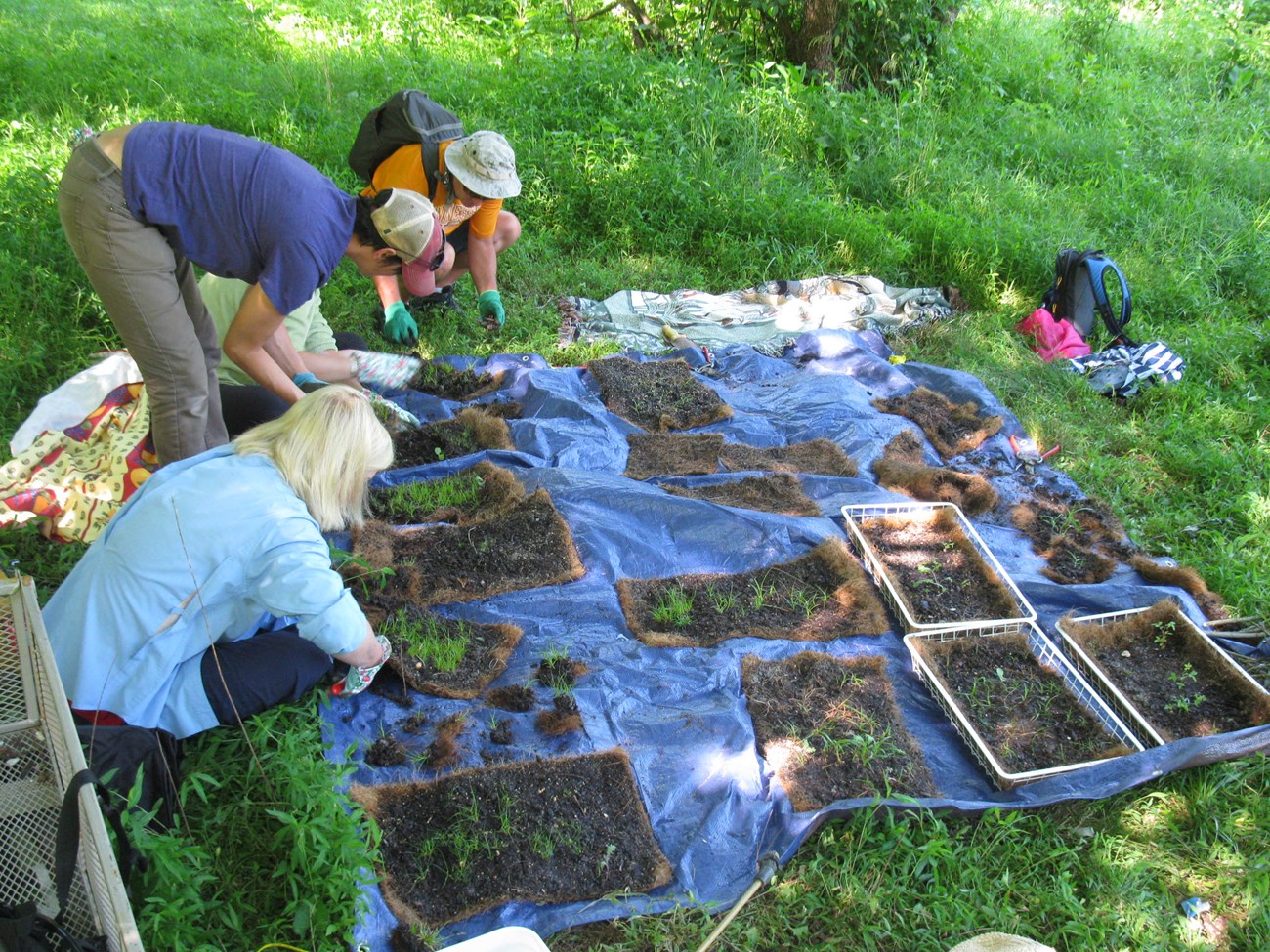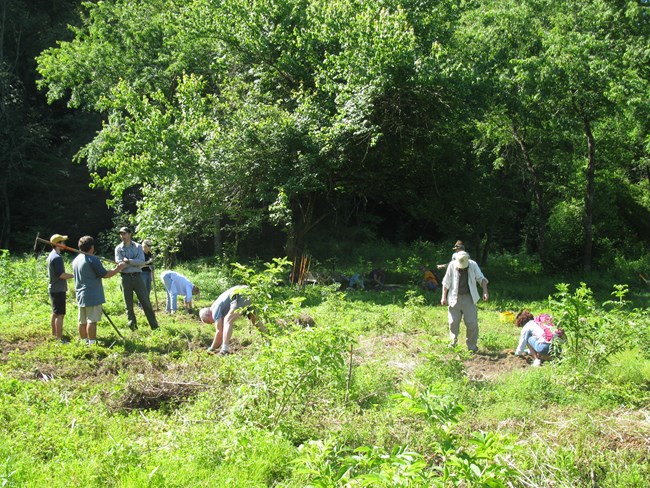Last updated: December 1, 2020
Article
Partnerships Make Wetland Restoration Happen

NPS/Johnson
A Critical Habitat
Wetland habitats are uncommon but crucial in the park. They provide critical habitat for diverse and somewhat rare native plants and animals. The Ravensford wetland is a remnant of a larger complex. Its restoration links it with a series of smaller wetlands along Raven Fork and the Oconaluftee River. This linkage increases wildlife habitat and improves downstream water quality.

NPS/Johnson
Education and Volunteer Opportunities
When the park earned a National Park Foundation/Disney grant in 2014, they had the funds to pursue the restoration. Funding supported invasive plant control, seed collection, and propagation of native plants. But they still needed people power. The Ravensford wetland adjoins the Eastern Band of Cherokee Central schools. The Tribe saw this project as an excellent educational opportunity for students. The Tribe also encouraged community participation. This project provided many learning and volunteer opportunities. It was a diverse group of volunteers: students at Oconoloftee Job Corps Center, Tribal members, school groups, and students from Warren Wilson College in Black Mountain, NC. Volunteers learned restoration techniques:- invasive plant control
- restoration planting
- fire management
Replanting Native Plants
To complete the restoration, park staff needed to plant native plants, such as swamp rose, seed box, silky willow, alder, and sedges. Staff collected seeds from native plant species and grew plants from the seed in the park greenhouse. The Garden Club of America also grew plants to contribute to the restoration effort. In June of 2016, the Garden Club of America Partners for Plants program held a workday and camping weekend. During that time volunteers planted the native plants grown by members in Highlands, NC. Altogether more than 500 seedlings were produced and planted!Park staff continue to remove invasive plants from the site. Thanks to the hard work of partners and volunteers, we can maintain the restored Ravensford wetland for future park visitors.
